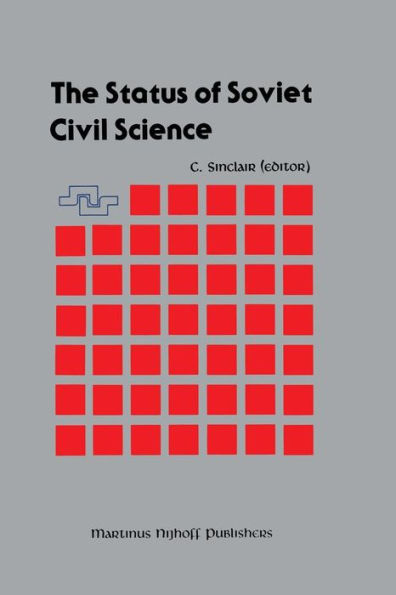The Status of Soviet Civil Science: Proceedings of the Symposium on Soviet Scientific Research, NATO Headquarters, Brussels, Belgium, September 24-26, 1986
This volume represents one outcome of the initiatives, taken from time to time by the NATO Science Committee, to add to the work of supporting civil science within the Alliance by mounting open meetings or other projects dealing with some topical aspect of science and technology policy. Past examples have included the 20th anniversary meeting of the establish ment of the Science Committee in 1978 which made a review of the achieve ments of the various programmes. It proved to be a valuable opportunity to take sk of the impact of science and technology on Western societies and was a particularly useful occasion for a critical analysis of the changing nature and social role of science and technology. In contrast, the Science Committee Conferences in 1973, and 1976, on the 'Technology of Efficient Energy Utilization' and on 'Thermal Energy Storage' were responses of the Committee to specific technological problems, engendered by the then acute energy supply position. A similar technologically oriented study was made in 1975 of the 'Rational Use of Potentially Scarce Metals'. These initiatives were the counterpoint to the bulk of the continuing work of the Committee in funding scientific mobility in the Alliance, as support to civil science. This latter is done competitively in response to unsolicited applications. The Committee hopes to demonstrate, by its special activities, its flexibility and responsiveness to the evolving activities, technologists and policy makers.
"1117010506"
The Status of Soviet Civil Science: Proceedings of the Symposium on Soviet Scientific Research, NATO Headquarters, Brussels, Belgium, September 24-26, 1986
This volume represents one outcome of the initiatives, taken from time to time by the NATO Science Committee, to add to the work of supporting civil science within the Alliance by mounting open meetings or other projects dealing with some topical aspect of science and technology policy. Past examples have included the 20th anniversary meeting of the establish ment of the Science Committee in 1978 which made a review of the achieve ments of the various programmes. It proved to be a valuable opportunity to take sk of the impact of science and technology on Western societies and was a particularly useful occasion for a critical analysis of the changing nature and social role of science and technology. In contrast, the Science Committee Conferences in 1973, and 1976, on the 'Technology of Efficient Energy Utilization' and on 'Thermal Energy Storage' were responses of the Committee to specific technological problems, engendered by the then acute energy supply position. A similar technologically oriented study was made in 1975 of the 'Rational Use of Potentially Scarce Metals'. These initiatives were the counterpoint to the bulk of the continuing work of the Committee in funding scientific mobility in the Alliance, as support to civil science. This latter is done competitively in response to unsolicited applications. The Committee hopes to demonstrate, by its special activities, its flexibility and responsiveness to the evolving activities, technologists and policy makers.
54.99
In Stock
5
1

The Status of Soviet Civil Science: Proceedings of the Symposium on Soviet Scientific Research, NATO Headquarters, Brussels, Belgium, September 24-26, 1986
308
The Status of Soviet Civil Science: Proceedings of the Symposium on Soviet Scientific Research, NATO Headquarters, Brussels, Belgium, September 24-26, 1986
308Paperback(Softcover reprint of the original 1st ed. 1987)
$54.99
54.99
In Stock

Product Details
| ISBN-13: | 9789401081320 |
|---|---|
| Publisher: | Springer Netherlands |
| Publication date: | 09/30/2011 |
| Edition description: | Softcover reprint of the original 1st ed. 1987 |
| Pages: | 308 |
| Product dimensions: | 6.10(w) x 9.25(h) x 0.03(d) |
From the B&N Reads Blog
